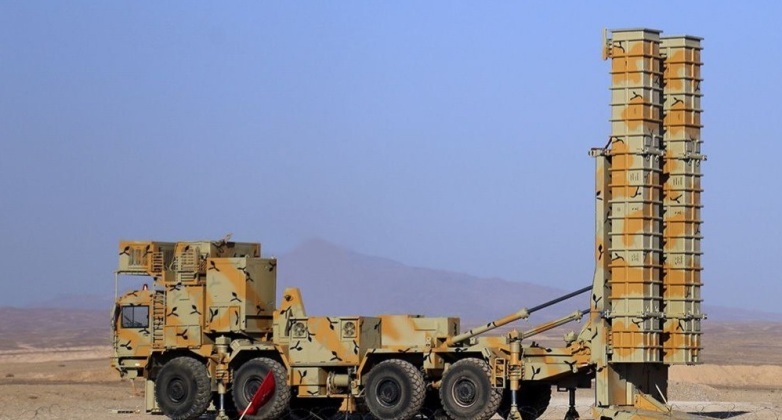News
Iranian Defence Chief Explains Why His Country Doesn’t Needs Russian S-400 Missile Systems
Iranian Defence Minister Brigadier General Mohammad Reza Ashtiani on March 6 dismissed reports of plans for his country to acquire Russian S-400 air defence systems, with speculation of such an acquisition having grown since it was confirmed that Su-35 heavyweight fighters had been ordered from Russia to equip the Iranian Air Force. Speaking at a press conference, Ashtiani claimed that Iran was already self sufficient in the production of air defence equipment, highlighting in particular the advanced capabilities of the Bavar-373 system which is the country’s indigenous equivalent to the S-400. Iran currently fields a number of Russian and Soviet air defence assets, most notably the S-200 system acquired in the 1990s which it is the world’s largest operator of, and which it has extensively modernised including recently with mobile launch vehicles.
Tehran placed an order for the S-300PMU-1 system the following decade, a direct predecessor to the S-400, although deliveries were frozen under the Dmitry Medvedev administration. Following the return of Vladimir Putin to the presidency Iran was offered the S-400 to replace the S-300s that had been cancelled, since the older system was no longer in production, although Iran reportedly insisted on acquiring the older systems leading it to acquire a highly customised variant of the S-300PMU-2 – the S-400’s immediate predecessor. These S-300s had been built to meet Syrian orders, but had been frozen by Russia due to Israeli and Western pressure. S-300PMU-2s began deliveries to Iran in 2017 after being modified to meet the country’s requirements.

Iran began to invest heavily in developing an industry for long range surface to air missile systems after S-300 sales were blocked by Russia, with the Bavar-373 being the country’s best known system and entering service in increasingly sophisticated new iterations. Although Iranian sources have claimed the system is superior to the S-300, this remains in serious question with its competitiveness with the S-400 being even more questionable still. According to Iranian sources each Bavar-373 unit has six mobile launchers each carrying four missiles, as well as a command post, search radar and target tracking radar. The system has a detection range of 260km, can track up to 300 targets simultaneously, and can engage up to six targets at a time. Its missiles can engage targets up to 200km away. These specifications leave it far behind the S-400, and the Bavar system is not thought to use multiple radars operating in complementary wavebands which is a key feature giving its Russian rival very high situational awareness including against stealth targets.
The S-400 has a 400km engagement range – double that of the Bavar-373 – and provides a multi layered defence with three separate classes of missile capable of engaging at over 200km as well as multiple shorter ranged ones. Tests of S-400s exported to China have shown them to be capable of intercepting hypersonic missiles at speeds exceeding Mach 8. Although Iran’s indigenous air defence systems often have modest specifications, they have proven effective in combat. This was best demonstrated by the 3rd of Khordad medium range system, which was deployed in 2019 to neutralise an American RQ-4A Global Hawk drone – a $220 million asset which was reportedly destroyed successfully on the first attempt.

Iran and Russia both rely heavily on ground based air defence systems to compensate for the relatively limited capabilities of their combat aviation. Indeed, the Russian Defence Ministry has spend significantly more on S-400 acquisitions alone than on acquisitions of all fighter classes put together in the last 30 years. This excludes significant further spending on other air defence systems such as S-300s, S-350s, BuKs, Pantsirs, Tors and S-500s. S-400s production was expanded tremendously in the late 2010s, with Russia now delivering multiple battalions a year to meet Indian orders while also making deliveries to its own forces and to Belarus. The country comfortably produces more surface to air missiles than the rest of the world combined – excluding China and North Korea the production scales of which are unknown.
Ground based systems are seen to be far more cost effective due to their negligible training and operational costs compared to aircraft. Iran has notably made almost no acquisitions of manned combat aircraft in almost 30 years, with the acquisition of Russian Su-35s being a landmark in this respect. Its willingness to purchase Su-35s, but not S-400s, is a result of the discrepancy in the states of its competing local systems, with its top indigenous fighter the Kowsar being a very light aircraft produced in small numbers and with negligible capabilities compared to the Su-35. While Iran may not be interested in S-400 acquisitions, this does not rule out future purchases of Russian air defence equipment. In particular, the S-500 system is set to be marketed for export and was designed for space warfare and to provide strategic defence against high value aircraft, satellites, space planes and even intercontinental range ballistic missiles. The unique system has no analogues abroad, and is not expected to have any similar competitors from Iran’s defence sector, meaning Iran could well consider S-500 purchases to provide a higher tier of defence above the Bavar-373 and other indigenous assets.












